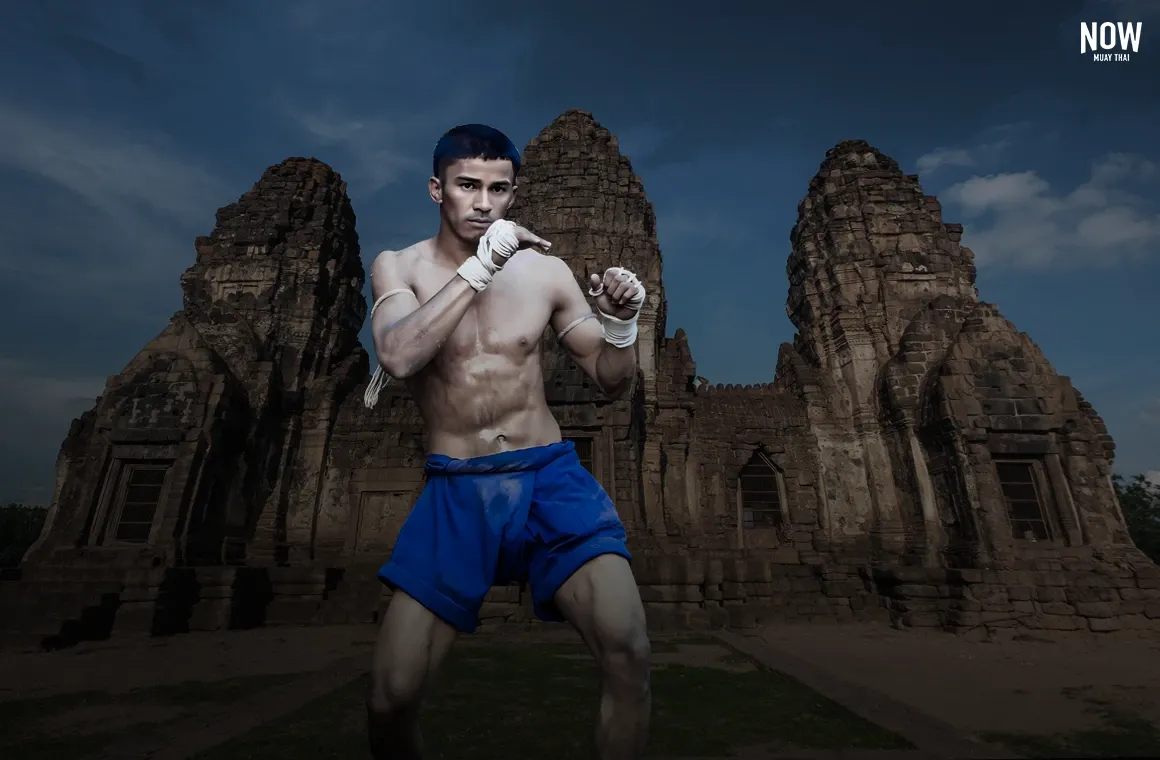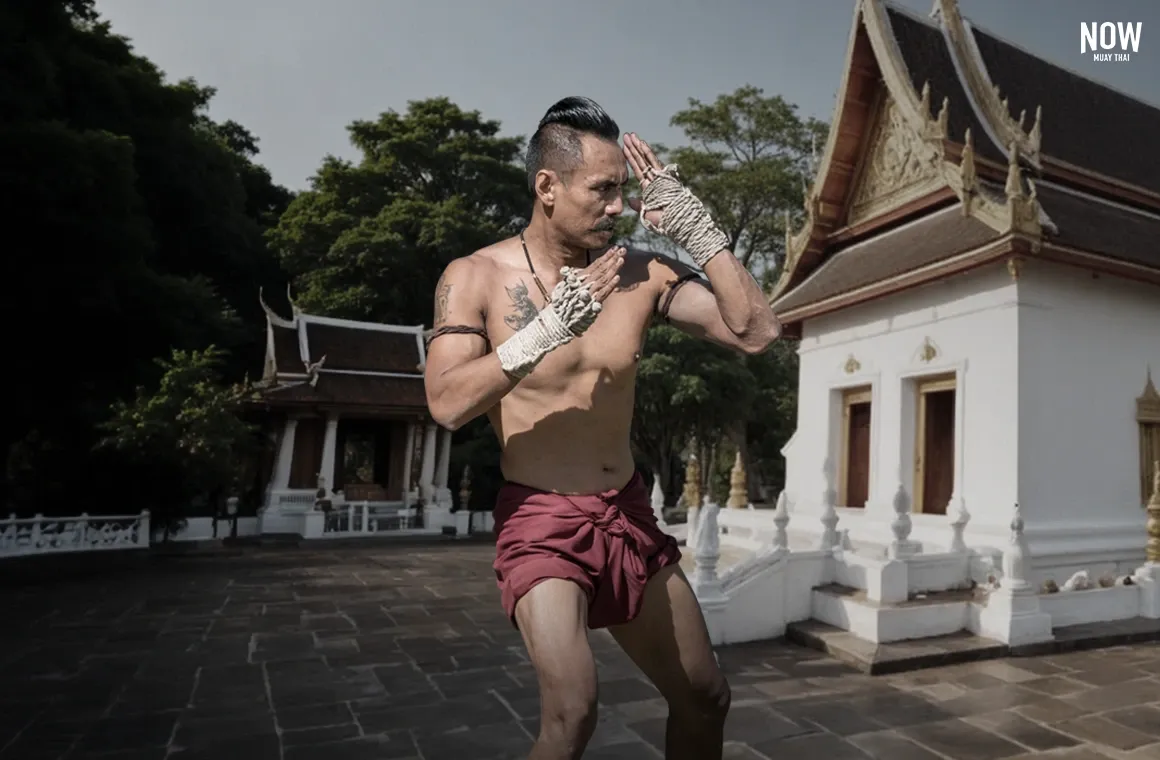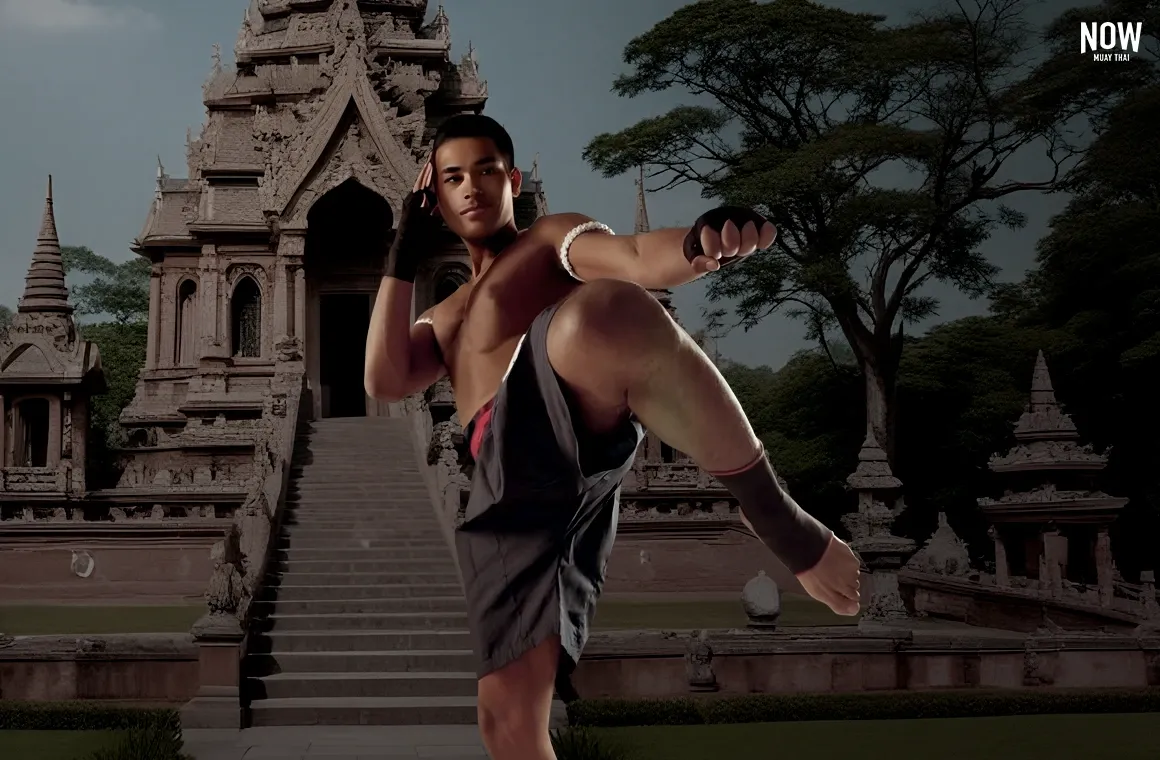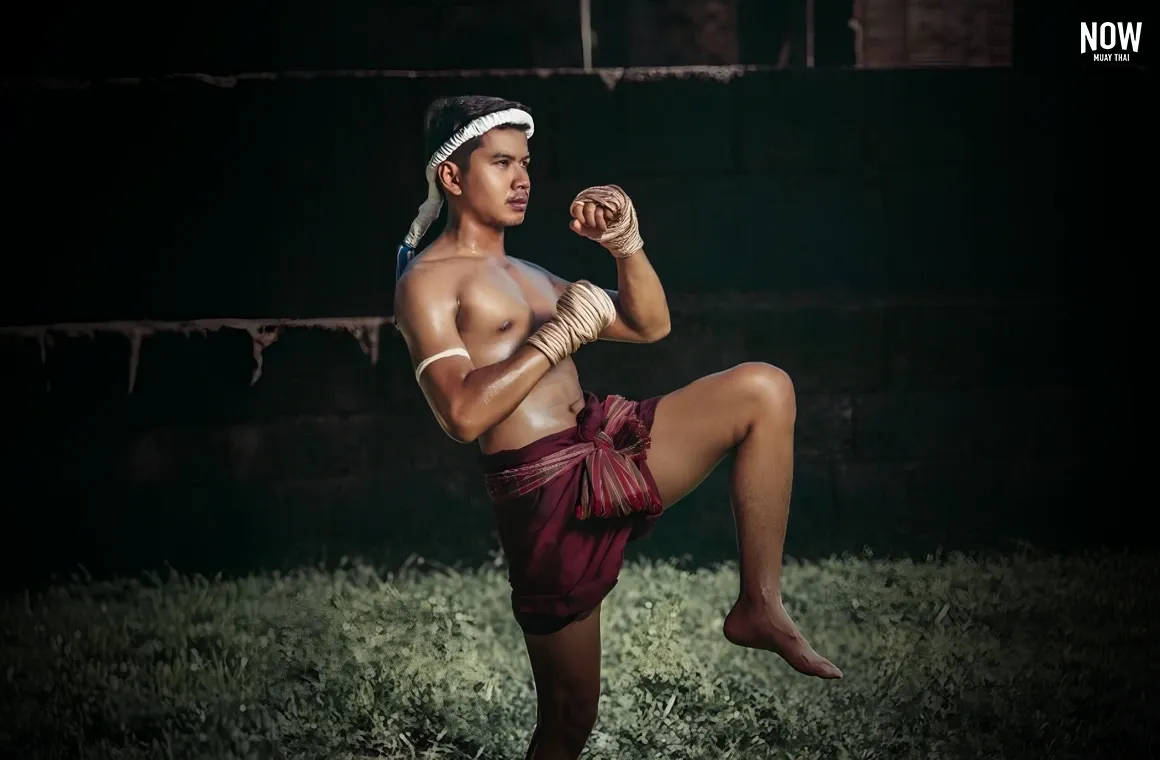0 / 32
0 / 32
The Role of Muay Thai in Thai Culture
October 21, 2024

Muay Thai, known for its strategic use of physical and mental agility, has been a vital part of Thai culture and history for centuries. Historically, Thai kings, military leaders, and commoners alike practiced Muay Thai to defend themselves and protect their homeland. When combined with traditional weapons like swords, spears, and staffs, Muay Thai provided the most effective means of close-quarter combat. Beyond its practical applications, Muay Thai is deeply intertwined with Thai customs, spirituality, and festivals. From ceremonial rituals like Wai Kru to its presence in local celebrations and temple fairs, Muay Thai is more than just a martial art—it is a living representation of Thai identity, blending tradition, respect, and cultural pride.
The Cultural and Spiritual Significance of Muay Thai
 Two Muay Thai fighters bow respectfully to each other in front of their Kru (teacher) before their match, symbolizing mutual respect and the opportunity to learn and improve together.
Two Muay Thai fighters bow respectfully to each other in front of their Kru (teacher) before their match, symbolizing mutual respect and the opportunity to learn and improve together.
Muay Thai is not only a form of physical combat but also a deeply spiritual practice, rooted in respect and gratitude for one’s teacher, or Kru. Three significant ceremonies encapsulate this aspect of Muay Thai culture, emphasizing the reverence students hold for their Kru and the tradition they uphold.
Muay Thai's connection to Thai culture runs deeper than its fighting techniques. It is intertwined with Thai spirituality, traditions, and values, embodying the discipline and respect that define the Thai way of life. Before every fight, practitioners perform the Wai Kru Ram Muay, a ritualistic dance that honors their Kru, ancestors, and the art of Muay Thai itself. This ceremony is far more than just a warm-up; it is a crucial aspect of the practice, symbolizing respect, gratitude, and spiritual preparation for battle.
The Wai Kru reminds fighters that Muay Thai is about more than defeating an opponent; it is about embodying values like discipline, humility, and honor. These principles are instilled in practitioners from their first days of training, emphasizing the importance of respecting those who came before them and their responsibility to carry the tradition forward.
Muay Thai also has strong ties to Buddhism, the dominant religion in Thailand. Many fighters seek blessings from monks or make offerings at temples before significant matches, believing these rituals offer spiritual protection. Fighters often receive Sak Yant (sacred tattoos), which are believed to provide strength and protection in battle. These spiritual practices underscore the belief that Muay Thai is not just a physical pursuit but also a deeply spiritual journey, strengthening both body and soul.
 Muay Thai fighter performs the Wai Kru Muay Thai ritual, paying deep respect to his Kru in the sacred Kuen Kru ceremony. This act symbolizes his humility, dedication, and readiness to learn, marking his formal initiation into the world of Muay Thai under his teacher's guidance and wisdom.
Muay Thai fighter performs the Wai Kru Muay Thai ritual, paying deep respect to his Kru in the sacred Kuen Kru ceremony. This act symbolizes his humility, dedication, and readiness to learn, marking his formal initiation into the world of Muay Thai under his teacher's guidance and wisdom.
1. Kuen Kru Ceremony
The Kuen Kru ceremony marks the formal initiation of a student into the world of Muay Thai. During this ritual, the student pays respect to their Kru, symbolizing their submission to the Kru’s wisdom, authority, and guidance. It is a sacred act, demonstrating the student’s humility, dedication, and readiness to learn. This ceremony cements the bond between student and teacher, establishing a relationship rooted in mutual respect.
2. Wai Kru Muay Thai Ceremony
The Wai Kru is one of the most iconic and well-known traditions of Muay Thai, performed by fighters before every match. This ceremonial dance is a way of paying homage to their teacher, ancestors, and the art of Muay Thai itself. The Wai Kru demonstrates the fighter's gratitude, respect, and mental readiness for the fight ahead. Despite the evolution of modern Muay Thai competitions, the Wai Kru remains an integral and enduring tradition, preserving the spirit of respect and discipline within the sport.
3. Krob Kru Ceremony
The Krob Kru is a more rare and advanced ceremony, performed when a student has mastered the art of Muay Thai and is deemed ready to become a Kru themselves. This ritual symbolizes the transfer of knowledge from teacher to student, marking the student’s progression to the status of a teacher. While this ceremony has become less common in modern times, it remains an important part of Muay Thai’s cultural heritage, symbolizing the continuity of tradition and the honor of teaching others.
Though the Kuen Kru and Krob Kru ceremonies have gradually faded over time, particularly as Thai society has modernized, the Wai Kru remains a vibrant and essential aspect of Muay Thai today. It is performed at competitions and in training camps worldwide, keeping alive the spirit of respect, gratitude, and humility that defines the essence of Muay Thai.
Muay Thai in Festivals: A Tradition of Community and Celebration
 Two Muay Thai fighters demonstrate their skills in a festival setting, engaging in a friendly match to showcase technique and identify areas for improvement, celebrating the tradition of community and the spirit of Muay Thai in local festivals.
Two Muay Thai fighters demonstrate their skills in a festival setting, engaging in a friendly match to showcase technique and identify areas for improvement, celebrating the tradition of community and the spirit of Muay Thai in local festivals.
Muay Thai has long been central to Thai festivals and celebrations. In rural areas, local matches are often held during temple fairs, agricultural festivals, and national holidays like Songkran and Loy Krathong. These matches serve as both entertainment and a celebration of local pride and cultural identity.
Historically, Muay Thai matches were arranged for royal events and religious festivals, with fighters from different villages competing. These events highlighted not only physical strength but also Muay Thai’s tactical elements, as fighters showcased their mastery of technique and strategy. For many, Muay Thai became a social equalizer, offering young men from humble backgrounds a path to recognition, respect, and often financial security, helping them support their families and build better futures.
Muay Thai originated from Muay Boran, with different regions developing their own distinctive styles. These styles are often highlighted in festival matches, reflecting the diversity of regional techniques.
Regional Styles of Muay Boran
Muay Lopburi (Central Thailand)
 Muay Lopburi, a traditional Muay Thai style from central Thailand, is known for its technical precision and clever strategy. Fighters use quick footwork, sharp punches, and intelligent defense to outmaneuver opponents, showcasing both speed and skill in every move.
Muay Lopburi, a traditional Muay Thai style from central Thailand, is known for its technical precision and clever strategy. Fighters use quick footwork, sharp punches, and intelligent defense to outmaneuver opponents, showcasing both speed and skill in every move.
Known for its technical precision and clever strategy, Muay Lopburi emphasizes swift movement, constant defense, and precise punches. Fighters are known for their ability to outmaneuver opponents with quick footwork and accuracy, often wrapping both their hands and ankles for extra protection.
Muay Tha Sao (Northern Thailand)
 Muay Tha Sao, originating from northern Thailand, is known for its speed, agility, and precision. Fighters use quick footwork, fast strikes, and evasive movements to outmaneuver opponents. This style emphasizes speed over power, with a focus on rapid kicks and strikes, making Muay Tha Sao unpredictable and highly effective in combat.
Muay Tha Sao, originating from northern Thailand, is known for its speed, agility, and precision. Fighters use quick footwork, fast strikes, and evasive movements to outmaneuver opponents. This style emphasizes speed over power, with a focus on rapid kicks and strikes, making Muay Tha Sao unpredictable and highly effective in combat.
Muay Tha Sao is famous for its speed and agility, focusing on fast strikes, particularly kicks and elbows. Fighters use fluid footwork to evade attacks and counter quickly, making it one of the most unpredictable styles.
Muay Korat (Northeastern Thailand)
 Muay Korat, a traditional Muay Thai style from northeastern Thailand, is renowned for its powerful strikes and heavy punches. Fighters in this style use wide, forceful attacks, relying on strength and endurance to overpower opponents.
Muay Korat, a traditional Muay Thai style from northeastern Thailand, is renowned for its powerful strikes and heavy punches. Fighters in this style use wide, forceful attacks, relying on strength and endurance to overpower opponents.
Muay Korat emphasizes powerful strikes, especially the buffalo swing punch (Mat Wiang Kwai), which delivers heavy blows. Fighters wrap their hands in rope (Muay Kard Chuek) and rely on wide punches and kicks to dominate their opponents.
Muay Chaiya (Southern Thailand)
 Muay Chaiya, a traditional Muay Thai style from southern Thailand, is famous for its defensive techniques and close-range combat. Known for its use of elbows, knees, and clever footwork, Muay Chaiya emphasizes blocking, counter-attacks, and tactical defense to neutralize opponents.
Muay Chaiya, a traditional Muay Thai style from southern Thailand, is famous for its defensive techniques and close-range combat. Known for its use of elbows, knees, and clever footwork, Muay Chaiya emphasizes blocking, counter-attacks, and tactical defense to neutralize opponents.
Known for its defensive strategies, Muay Chaiya focuses on blocking and counter-attacking. Its distinctive three-step footwork and emphasis on elbows, knees, and grappling make it a highly tactical style, often using elaborate defenses to neutralize an opponent.
Importance of These Styles in Festivals
 An ancient painting depicting a Muay Thai match during the Rattanakosin era, showing an outdoor ring with ropes at all four corners. Fighters wear gloves, and a referee stands in the center. Traditional Muay Thai music accompanies the match, as a large crowd gathers to watch the event.
An ancient painting depicting a Muay Thai match during the Rattanakosin era, showing an outdoor ring with ropes at all four corners. Fighters wear gloves, and a referee stands in the center. Traditional Muay Thai music accompanies the match, as a large crowd gathers to watch the event.
credit: กองโบราณคดี - กรมศิลปากร
These regional styles were often showcased during local festivals and competitions, with fighters representing their hometowns. It wasn’t just about victory—it was about demonstrating the superiority of their region's style. Even today, these matches reflect the cultural diversity of Muay Thai, preserving the unique techniques of each region while fostering a sense of community and pride.
In the past, exchanging techniques and fighting styles among fighters from different regions helped Muay Thai evolve continuously. While local festival competitions may not hold the same grand scale as major national events today, they remain the foundation of Muay Thai. These smaller matches give fighters the opportunity to develop their skills and showcase their abilities. Many successful fighters who now compete in national and international arenas began their journeys in these local events, using them as stepping stones to greater achievements in the sport.
Here’s a revised version of your final paragraph that includes your call to action for Now Muay Thai:
Preserving Tradition Through Modern Challenges
 Muay Thai technique showcasing the blend of 'Mae Mai' and 'Luk Mai' moves. The image illustrates the 'Rue See Bod Ya' technique, where the fighter delivers a downward elbow strike aimed at the opponent's head
Muay Thai technique showcasing the blend of 'Mae Mai' and 'Luk Mai' moves. The image illustrates the 'Rue See Bod Ya' technique, where the fighter delivers a downward elbow strike aimed at the opponent's head
Despite Muay Thai's global popularity, there is an ongoing challenge in ensuring the art retains its cultural and historical roots. Many traditional techniques, such as Mae Mai Muay Thai and Luk Mai Muay Thai, have been adapted or forgotten due to modern rules and safety regulations. However, efforts are being made to preserve these techniques through special schools and cultural programs that teach Muay Boran, the ancient form of Muay Thai.
In Thailand, organizations like the Muay Thai Conservation Center and Muay Thai festivals promote these traditional aspects, ensuring future generations not only understand how to fight but also the deep cultural significance behind the techniques and rituals. To experience this rich heritage firsthand, visit Nowmuaythai.com and explore top-tier Muay Thai gyms across Thailand, where you can train in both modern and traditional styles while connecting with the heart of Thai culture.
Learn more about Muay Thai
Back








